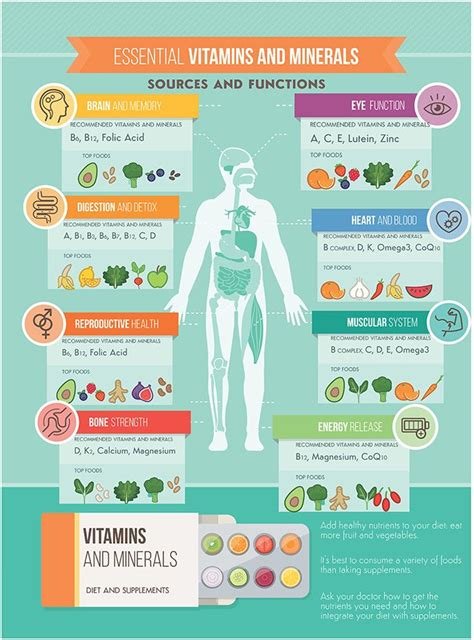Tips for Building Muscle Mass for Women
As a woman, building muscle mass can be a challenging and intimidating endeavor. Many women mistakenly believe that strength training will make them “bulky” or “too masculine.” However, the truth is that building muscle can have a multitude of benefits for women, including improved metabolism, increased strength, and a toned physique. In this comprehensive guide, we will explore the various aspects of women’s muscle building process and provide valuable tips and insights on how to achieve your muscle building goals.
From understanding the muscle building process specific to women to the importance of strength training, creating a well-structured workout program, balancing cardio and resistance training, optimal nutrition, the role of protein in muscle growth, recovery and rest, and tracking progress and adjusting goals, this blog post will cover everything you need to know to embark on your muscle-building journey. Whether you’re a beginner or have some experience with strength training, these tips will help you navigate the complexities of building muscle and achieve your desired results.
Understanding Women’s Muscle Building Process
When it comes to understanding women’s muscle building process, it’s important to recognize that women have different hormonal and physiological profiles compared to men. This means that their approach to building muscle should also be tailored to their specific needs and goals.
One key factor in the muscle building process for women is the role of estrogen. This hormone plays a significant role in determining the amount of muscle mass that women can gain. Women typically have lower levels of testosterone compared to men, which means that they may have to work harder to build and maintain muscle.
Another important aspect to consider is the training and workout program designed for women. It’s essential to focus on strength training exercises that target multiple muscle groups and promote overall strength and stability. This can include exercises such as squats, deadlifts, and bench presses, which are all effective for building muscle mass.
In addition to strength training, nutrition also plays a crucial role in the muscle building process for women. Consuming an adequate amount of protein, healthy fats, and carbohydrates is essential for providing the body with the necessary nutrients to support muscle growth and recovery.
Importance of Strength Training for Women
Strength training is an essential component of women’s overall fitness routine. It not only helps in toning the muscles but also plays a vital role in improving bone density and overall strength. Women, in particular, can benefit greatly from incorporating strength training exercises into their workout regimen.
One of the key benefits of strength training for women is its ability to increase metabolism and promote fat loss. By building lean muscle mass, women can boost their resting metabolic rate, leading to more efficient calorie burning even at rest. This can be especially beneficial for women looking to manage their weight and improve body composition.
In addition to the physical benefits, strength training can also have a positive impact on mental health. Engaging in regular strength training can help boost confidence and self-esteem as women start to see improvements in their strength and physical appearance. It can also serve as a stress-reliever and provide a sense of accomplishment and empowerment.
Furthermore, strength training is crucial for overall functional fitness and injury prevention. Women who incorporate strength training into their routine are better able to perform everyday tasks with ease and reduce the risk of injury. This is particularly important as women age, as building and maintaining muscle strength becomes essential for independence and longevity.
Creating a Well-Structured Workout Program
When it comes to creating a well-structured workout program, it’s important to consider a few key factors. Firstly, you’ll want to identify your fitness goals, whether it’s building muscle, losing fat, or improving overall strength and endurance. This will help you tailor your program to suit your specific needs and objectives.
Once you have a clear understanding of your fitness goals, the next step is to choose the right exercises that will target the muscles you want to work on. This may involve a combination of resistance training, cardio, and flexibility exercises to ensure a well-rounded approach to your workout program.
Another crucial aspect of creating a well-structured workout program is to establish a consistent schedule. This means determining how many days a week you’ll be working out, as well as the duration and intensity of each session. Consistency is key to seeing progress and achieving your fitness goals.
Lastly, don’t forget to incorporate rest and recovery days into your program. Giving your muscles time to repair and recuperate is essential for building strength and avoiding injury. It’s all about finding the right balance between pushing yourself during workouts and allowing your body to recover effectively.
Balancing Cardio and Resistance Training
When it comes to balancing cardio and resistance training in your workout routine, it’s important to understand the benefits of each and how they can work together to help you achieve your fitness goals. Cardio exercises, such as running, cycling, or swimming, are great for improving cardiovascular health, burning calories, and increasing endurance. On the other hand, resistance training, which includes exercises using weights or resistance bands, helps to build and tone muscles, increase strength, and improve overall body composition.
Many people often make the mistake of focusing solely on one type of exercise, either cardio or resistance training, but it’s actually beneficial to incorporate both into your routine. By balancing cardio and resistance training, you can achieve a well-rounded workout that targets both your cardiovascular system and your muscles, leading to overall better fitness and physical health.
One way to effectively balance cardio and resistance training is to create a schedule that includes both types of exercises throughout the week. For example, you can dedicate certain days to cardio workouts, such as running or cycling, and other days to resistance training, such as lifting weights or doing bodyweight exercises. Additionally, incorporating high-intensity interval training (HIIT) workouts that combine both cardio and resistance exercises can be a great way to maximize the benefits of both types of training in a single session.
It’s also important to listen to your body and make adjustments as needed. If you’re feeling fatigued from too much cardio, it might be time to include more resistance training days in your schedule, and vice versa. Finding the right balance of cardio and resistance training is crucial for avoiding burnout, minimizing the risk of overuse injuries, and ensuring that you continue to see progress in your fitness journey.
Optimal Nutrition for Muscle Growth
When it comes to building muscle, nutrition plays a crucial role in the process. Consuming the right nutrients is essential for optimal muscle growth and development. This includes a focus on protein, carbohydrates, and healthy fats to support muscle recovery and repair.
Protein is often considered the most important macronutrient for muscle growth. It provides the amino acids necessary for building and repairing muscle tissue. Incorporating lean sources of protein such as chicken, fish, and tofu into your diet can help support muscle protein synthesis and aid in muscle recovery post-workout.
In addition to protein, consuming an adequate amount of carbohydrates is important for fueling your muscles during exercise and replenishing glycogen stores
The Role of Protein in Building Muscle Mass
Protein is a crucial component in the process of building muscle mass. When it comes to muscle growth, adequate protein intake is essential for optimal results. The role of protein in muscle development cannot be overstated, as it is the building block of muscle tissue. In order to build lean muscle mass, it is important to consume enough high-quality protein sources on a daily basis.
Protein provides the necessary amino acids that help repair and rebuild muscle tissue after strength training workouts. Without enough protein, the muscles may not have the necessary materials to repair and grow, leading to slower progress in muscle building efforts. Therefore, it is important for individuals looking to increase muscle mass to ensure they are consuming enough protein in their diet.
It is recommended that individuals engaging in strength training consume approximately 0.8-1 gram of protein per pound of body weight in order to support muscle growth. This means that for a person weighing 150 pounds, they should aim to consume 120-150 grams of protein per day. This can be achieved through foods such as lean meats, eggs, dairy products, and plant-based protein sources such as legumes, nuts, and seeds.
In addition to the quantity of protein consumed, the timing of protein intake is also important for muscle recovery and growth. Consuming protein-rich meals or supplements within 30 minutes to an hour after a workout can help promote muscle repair and growth. This post-workout window is when the muscles are most receptive to nutrients, including protein, and consuming protein during this time can enhance the recovery process.
Recovery and Rest: Essential for Muscle Development
Recovery and rest are often overlooked aspects of muscle development, but they are absolutely essential for achieving optimal results. When it comes to building muscle, many people focus solely on their workouts and neglect the importance of allowing the body to recover. However, rest is when your muscles actually have the opportunity to repair and grow. Without adequate rest, your muscles will not have the chance to recover and adapt to the stress placed on them during resistance training.
Rest days are just as important as workout days when it comes to building muscle. It’s during rest that your body can replenish energy stores, repair damaged tissues, and remove metabolic waste. Without proper rest, your body will not be able to perform at its best during workouts, and the risk of injury increases significantly. In addition, inadequate rest can lead to overtraining, which can actually hinder muscle growth and development.
Recovery is not only important for physical reasons, but also for mental and emotional well-being. It’s crucial to listen to your body and allow for adequate rest so that you can maintain a healthy balance in your life. Overtraining can lead to burnout, decreased motivation, and even depression. By prioritizing rest and recovery, you can ensure that you are in a good mental state to continue pushing yourself in your workouts and achieving your muscle building goals.
In order to optimize muscle development, it’s important to incorporate rest and recovery into your overall workout routine. This means scheduling regular rest days, getting enough sleep, and listening to your body’s signals. By doing so, you can maximize the results of your hard work in the gym and achieve your desired muscle growth and strength.
Tracking Progress and Adjusting Goals
When it comes to achieving fitness goals, tracking progress and adjusting goals are key components to success. The first step in tracking progress is to establish clear and measurable goals. Whether it is increasing strength, building muscle, or improving endurance, having specific targets will help keep you motivated and focused.
Once you have set your goals, it is important to regularly assess your progress. This can be done through various methods such as keeping a workout journal, taking regular measurements of your body, or using fitness tracking apps. By monitoring your progress, you will be able to see what is working well and where adjustments may be needed.
As you track your progress, it is important to be flexible with your goals. It is natural for our bodies to respond differently to training, and not all progress will happen at the same rate. Adjusting your goals based on your actual progress will help you stay on track and prevent feelings of frustration or disappointment.
In addition to adjusting your goals, it is also important to celebrate your achievements along the way. Recognizing and acknowledging your progress, no matter how small, will help keep you motivated and focused on the bigger picture.
Frequently Asked Questions
What is the muscle building process for women?
The muscle building process for women involves increasing muscle mass through strength training and proper nutrition. It requires consistent effort and dedication to see results.
Why is strength training important for women?
Strength training is important for women as it helps build muscle, increase bone density, and improve overall strength and endurance. It also plays a key role in boosting metabolism and promoting fat loss.
How can women create a well-structured workout program for muscle building?
Women can create a well-structured workout program by incorporating a variety of exercises that target different muscle groups, including compound movements and isolation exercises. It is important to include both cardio and resistance training to achieve balance.
What is the role of nutrition in building muscle mass for women?
Optimal nutrition is essential for muscle growth in women. It involves consuming enough protein, carbohydrates, and healthy fats to support muscle development. Proper hydration and adequate calorie intake are also important factors to consider.
How does protein contribute to building muscle mass in women?
Protein plays a crucial role in building muscle mass for women as it provides the necessary amino acids for muscle repair and growth. It is important to consume an adequate amount of protein from various sources such as lean meats, dairy, eggs, and plant-based options.
Why is recovery and rest essential for muscle development in women?
Recovery and rest are essential for muscle development in women as they allow the body to repair and rebuild muscle tissue. It is during rest that muscle growth occurs, so adequate sleep and rest days are crucial for allowing the muscles to recover and grow.
How can women track their progress and adjust their muscle building goals?
Women can track their progress by keeping a workout journal, taking measurements, and monitoring strength gains. It is important to regularly reassess fitness goals and make adjustments to the workout program and nutrition plan as needed to continue making progress.






